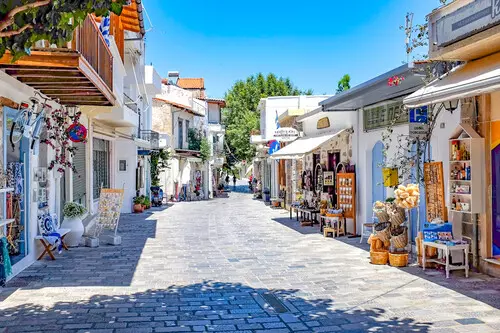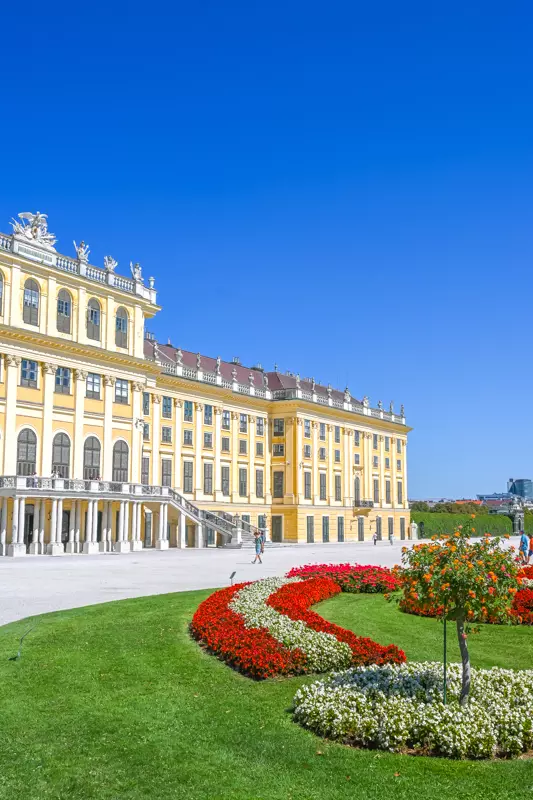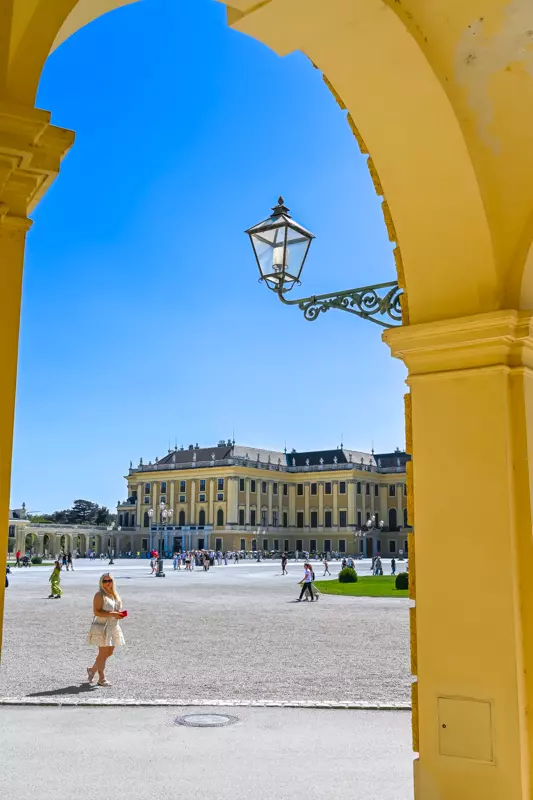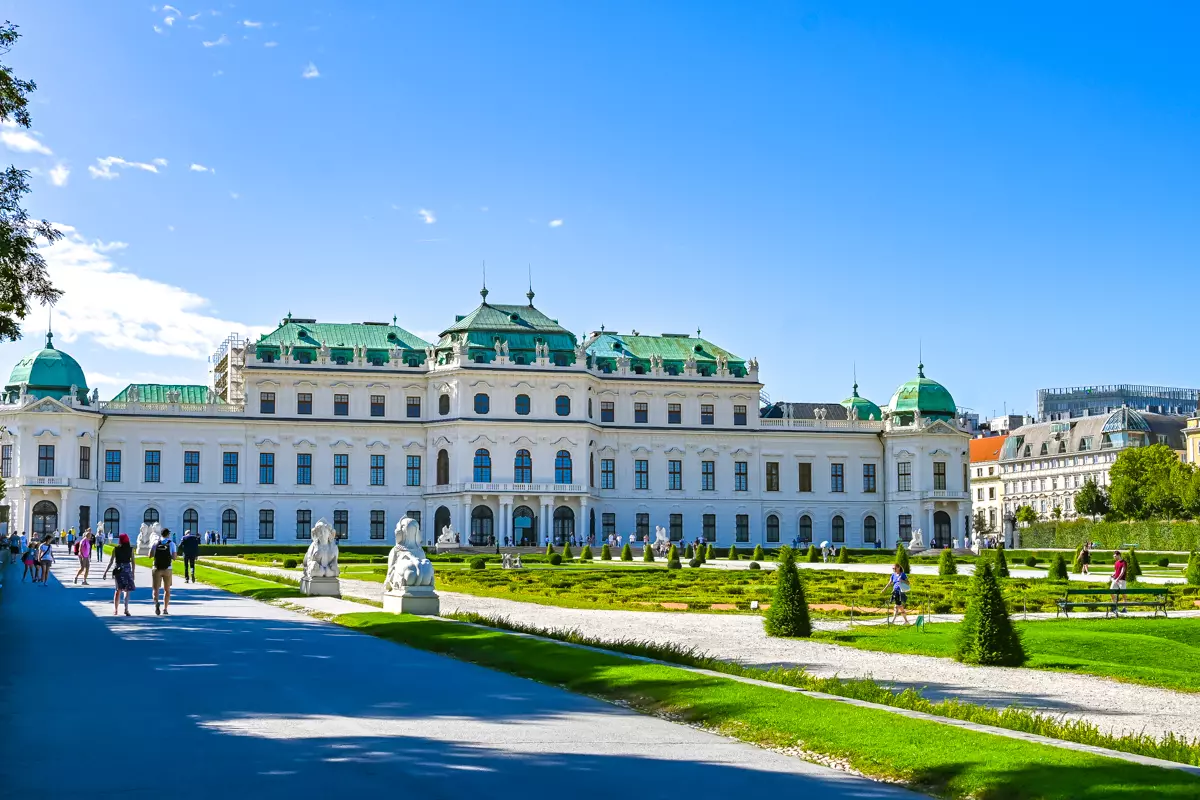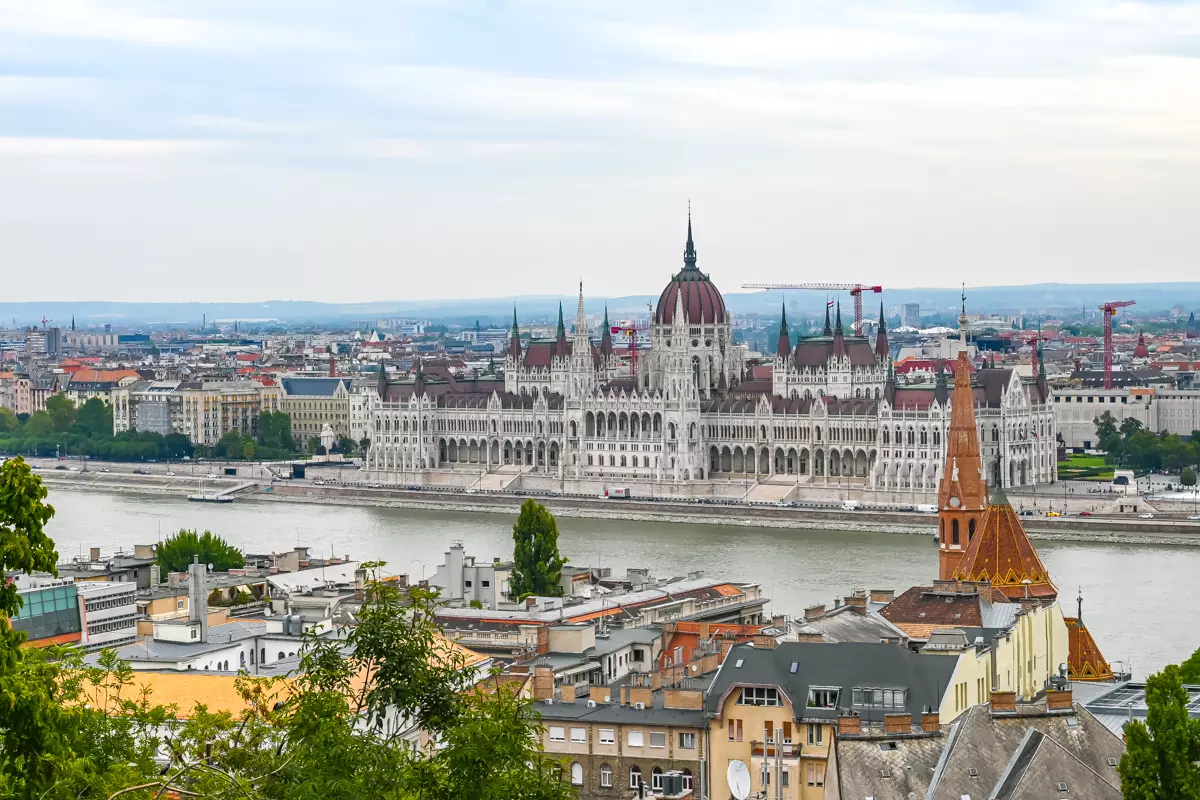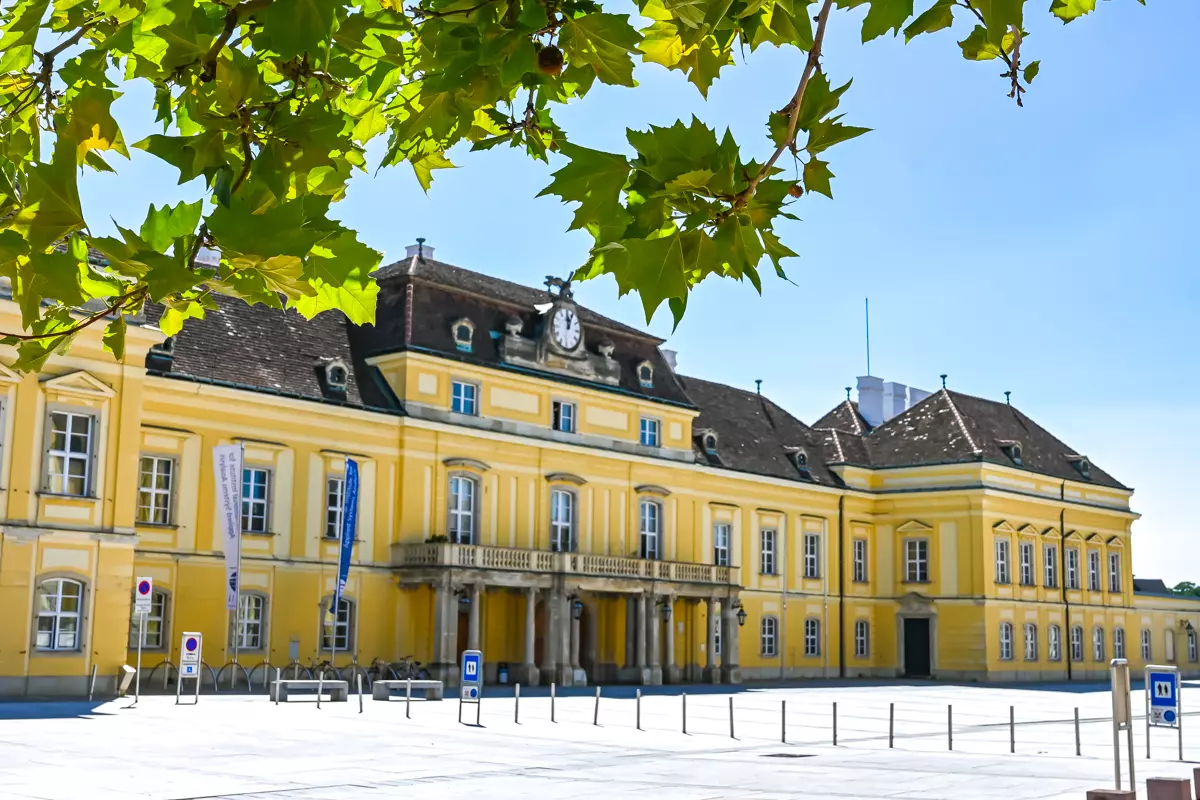How To Get To Schönbrunn Palace In Vienna
If you’re visiting Vienna, one place you absolutely cannot miss is Schönbrunn Palace. Once the summer residence of the Habsburg dynasty, it is now one of the most visited tourist attractions in Austria. The palace is renowned for its grandeur and opulence, and it is also a UNESCO World Heritage Site.
Here, you’ll step into a truly imperial atmosphere – think lavish halls where rulers once lived, and gardens outside filled with fountains, elegant avenues. and sculptures. In this post, I’ll share what makes Schönbrunn Palace so special – from its history and interiors to the gardens, zoo, and practical tips for your visit.
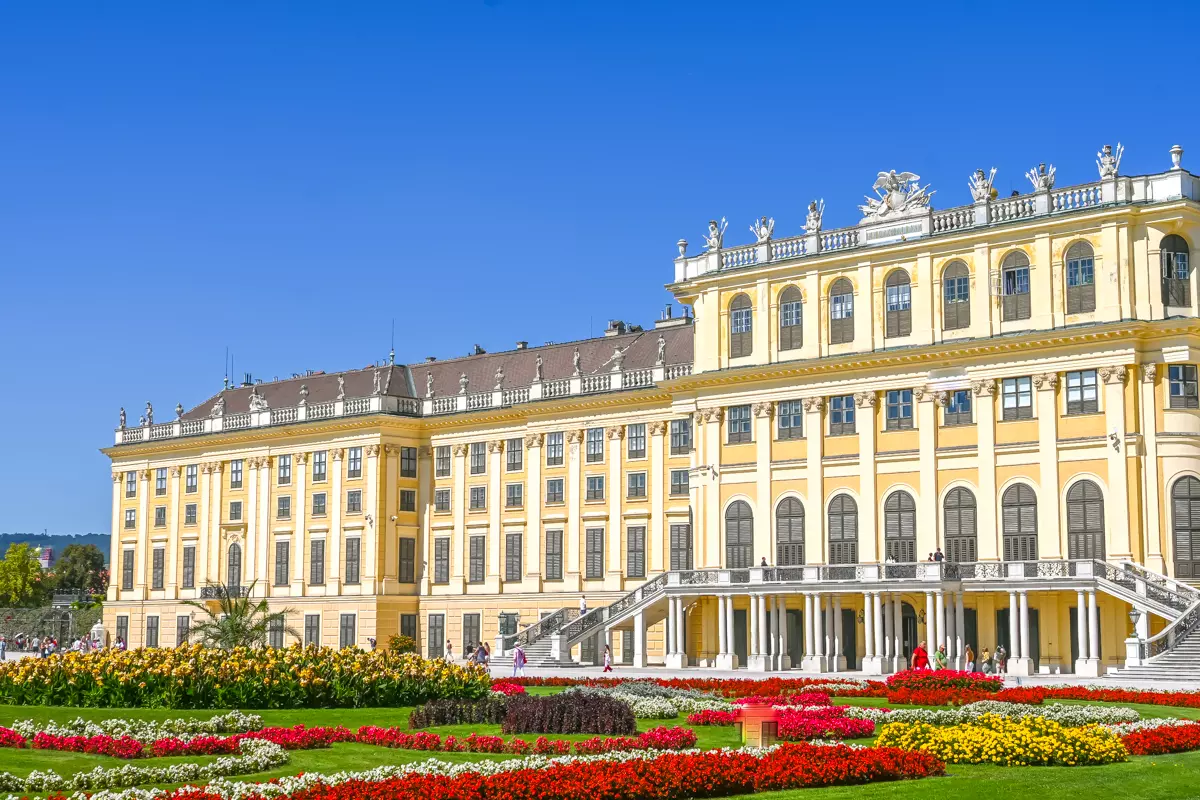
History Of The Palace
The history of Schönbrunn Palace dates back to 1569, when Emperor Maximilian II acquired these lands, where there was only a small hunting lodge. The true grandeur of Schönbrunn emerged at the end of the 17th century, when Emperor Leopold I decided to build a palace here to rival the residences of other European monarchs. In my eyes, he succeeded brilliantly.
The greatest flourishing came under Empress Maria Theresa (1740–1780). She transformed Schönbrunn into what we see today. A magnificent Baroque residence where political decisions took place, lavish banquets were held, and, of course, musical performances filled the halls. Just imagine, in 1762, a six-year-old Mozart performed here for the Empress!
Later, the palace became a favorite summer residence of Emperor Franz Joseph I and his famous wife Elisabeth – the legendary Sisi. It is said this was one of their most beloved residences, so as you walk through the corridors, you can almost feel the spirit of that era.
After the fall of the monarchy in 1918, the palace became state property and opened to the public as a cultural and historical landmark. Since 1996, Schönbrunn has proudly been on the UNESCO World Heritage List. It stand as testament not only to its beauty but also to its importance in world history.
Architecture & Interiors
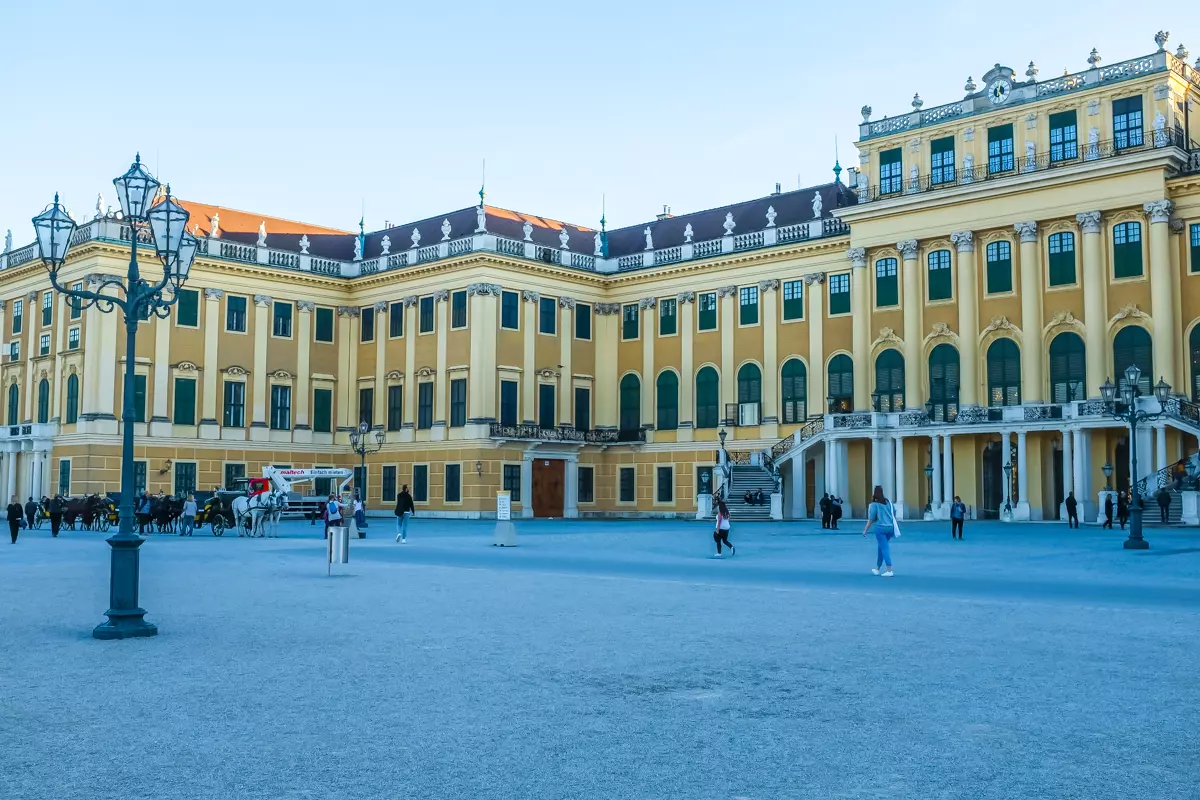
Schönbrunn Palace is one of the most striking examples of Baroque architecture in Europe. From the outside, it looks massive yet elegant, with a warm yellow facade. The sun makes this color glow even more – especially in the evening – making the palace look truly imperial.
Inside, even more impressive sights await. Out of more than 1,400 rooms, around forty are open to visitors – more than enough to grasp the grandeur of imperial Austria.
The most remarkable are the apartments of Emperor Franz Joseph I – particularly his bedroom. I was surprised to learn that the ruler, who reigned for 68 years, slept in a simple soldier’s bed and died there in 1916. In contrast, Empress Sisi’s apartments are softer and cozier in style, decorated with family portraits that give them a more intimate atmosphere.
A true jewel of the palace is the Million Room. It features rare rosewood paneling, gilded carvings, and 60 Indo-Persian miniatures. Many consider it one of the most magnificent Baroque interiors in the world – worth seeing even if you’re not a big fan of history.
And of course, the Great Gallery – a spacious, light-filled hall with ceiling frescoes and huge chandeliers. Once the venue for lavish banquets and waltzes, it’s easy to imagine the atmosphere that filled the room in the time of the emperors.
Other Museums & Orangery
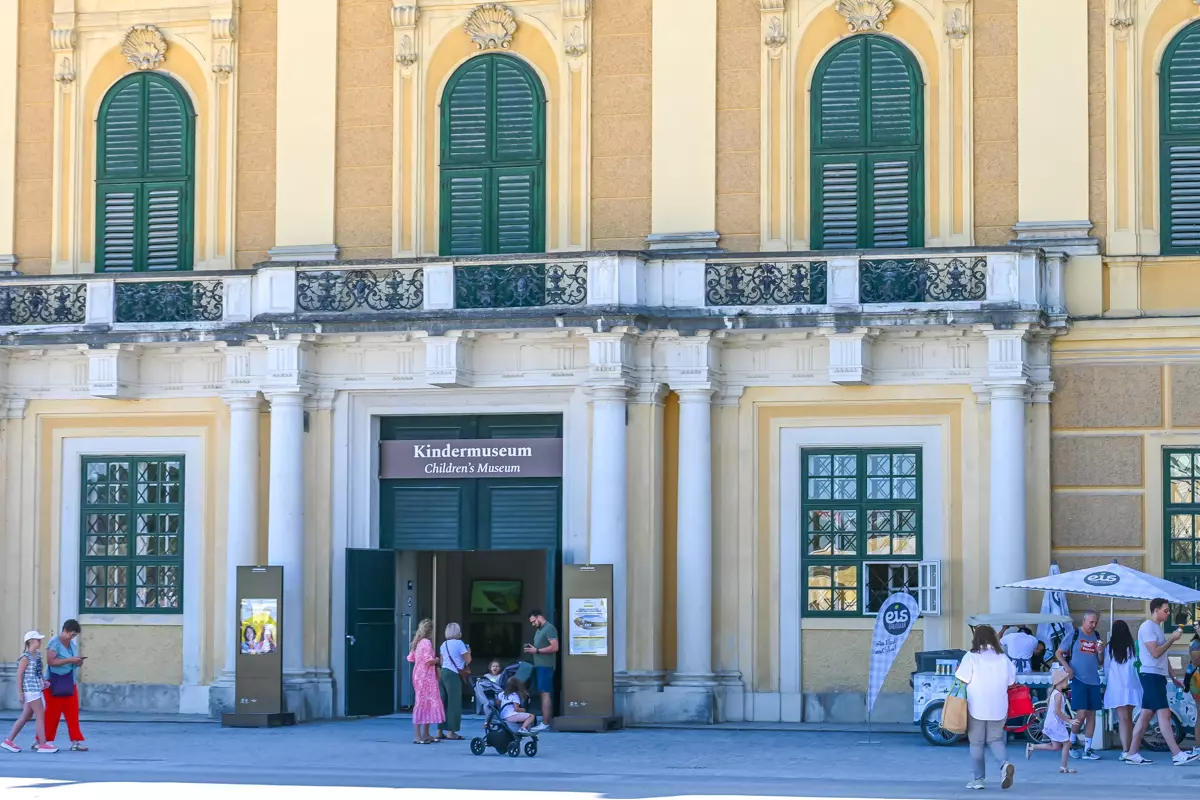
The Schönbrunn complex is not only about the palace and the gardens. If you have more time, stop by the museums and exhibitions that offer even deeper insights into imperial life.
Carriage Museum – Here you’ll find original imperial carriages, luxurious coaches, ceremonial vehicles, and even small children’s carriages. Walking among these massive, ornate vehicles, it’s hard to believe they were actually used for real journeys and not just made for movies.
Children’s Museum – A perfect stop if you’re traveling with family. Children can try on period costumes, discover the daily life of imperial children, take part in interactive activities, and learn what life was like for the young Habsburgs. The museum is designed to be hands-on, making it both fun and informative.
Orangery – A vast Baroque building originally designed to shelter citrus and exotic plants during the winter. Today, part of it still serves as winter quarters for plants, while other sections are used for concerts and cultural events. Even if you don’t go inside, the sheer size and elegant architecture make it worth admiring from the outside.
Schönbrunn Gardens
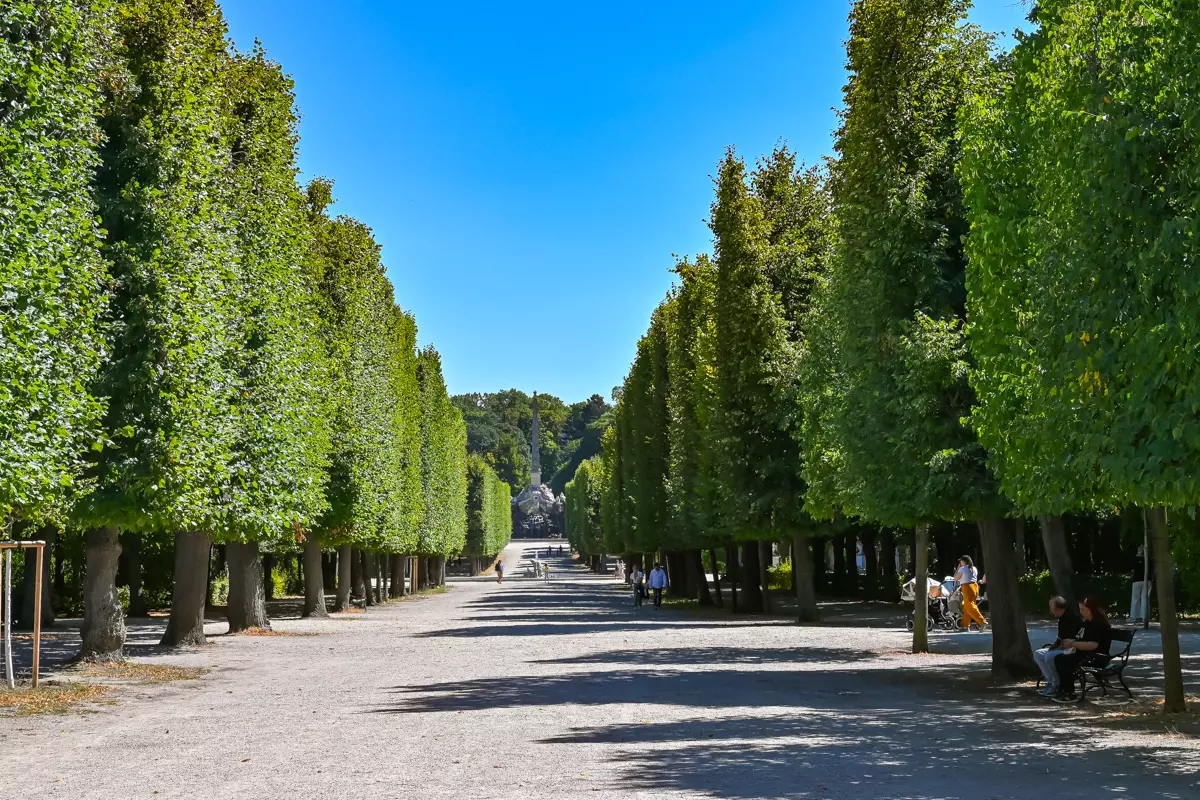
The park at Schönbrunn is enormous – with symmetrical avenues, fountains, sculptures, and green lawns laid out in perfect harmony, every corner feels picture-perfect. Best of all, a walk through the gardens is free of charge, so even if you don’t go inside the palace, this place is still well worth a visit.
One of the garden’s most impressive highlights is the Neptune Fountain, decorated with mythological figures and offering a beautiful view of the palace. It’s a popular spot where many travelers stop to take photos – and of course, I couldn’t resist doing the same.
All around the park you’ll also find dozens of classical statues and decorative sculptures. From gods and goddesses to playful mythological figures, they give the gardens an unmistakably imperial atmosphere and make every stroll feel like walking through an open-air museum.
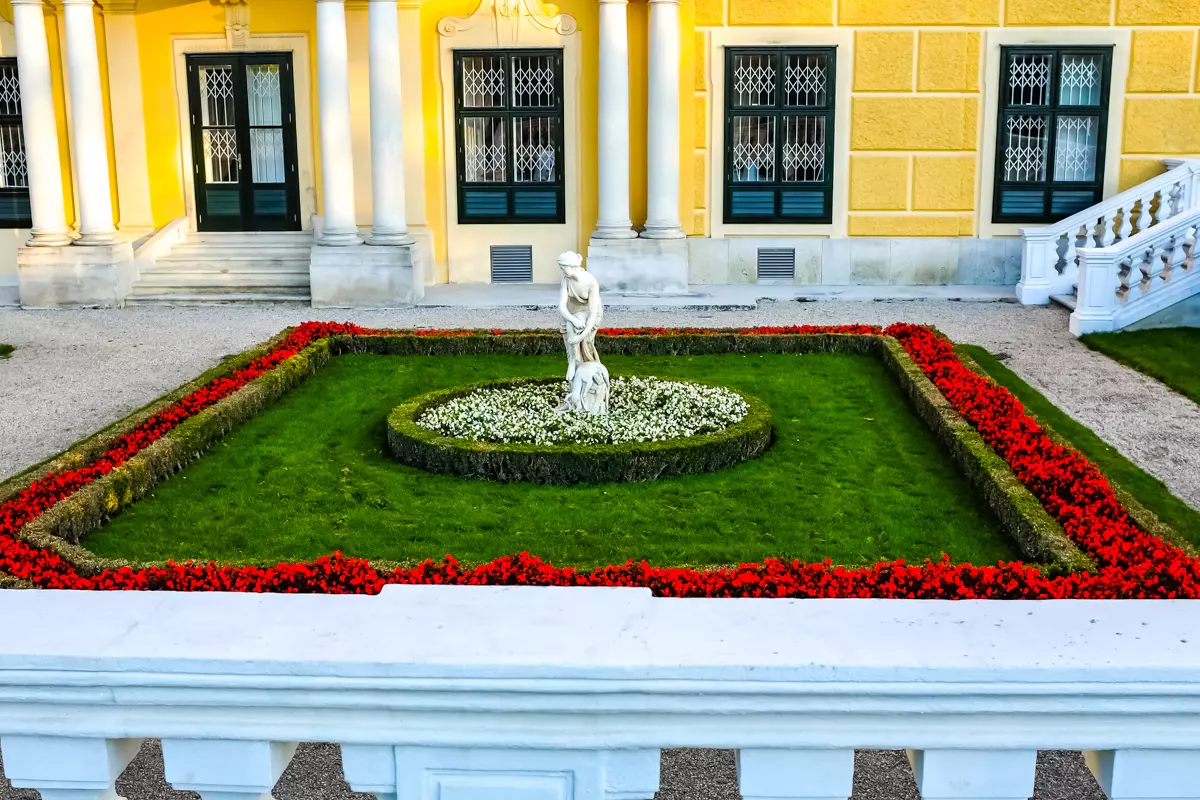
Another fun attraction is the maze. It’s not huge, but wandering between the tall hedges adds a playful touch, especially if you’re visiting with kids or friends. Just keep in mind that it’s not included in the free gardens – you’ll need the Exclusive Gardens Combined Ticket to get in.
If you don’t feel like walking the entire park, hop on the Panorama Train – a fun way to get around Schönbrunn, with stops at the main sights.
My favorite part of the gardens is the path leading up to the Gloriette. The walk up isn’t difficult, and along the way the views become more and more beautiful.
The Gloriette
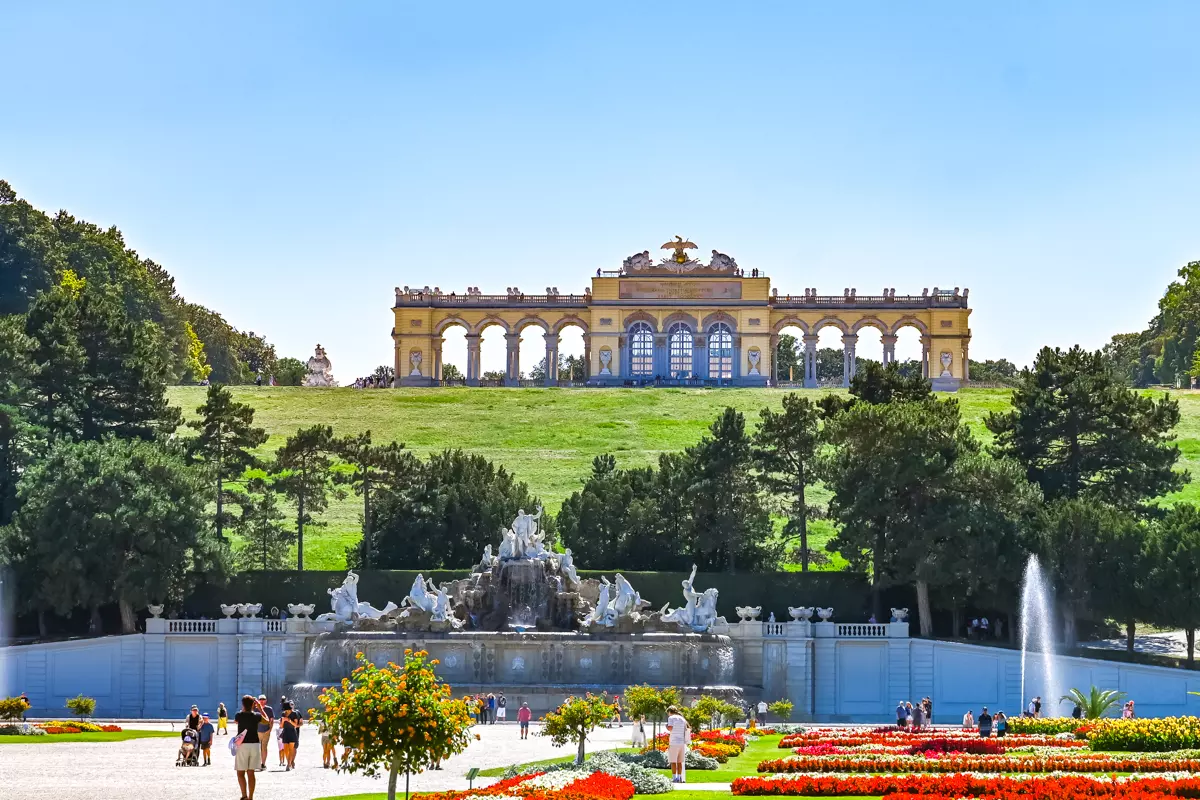
At the top of the hill, behind the palace gardens, lies one of Schönbrunn’s greatest gems – the Gloriette. This elegant colonnade with arches was built in 1775 as a symbol of imperial power. Later, its central hall was used as a dining room, and today it houses a cafe.
From the Gloriette’s terrace, the view is a feast not only for the eyes but also for the soul. In front, you can see the palace and the beautifully arranged gardens, and in the distance, the rooftops of Vienna. It’s one of those places where you simply have to stop, take a photo, and spend a few minutes soaking in the magnificent view.
Discover: Top Cruises & Boat Tours in Vienna.
Schönbrunn Zoo
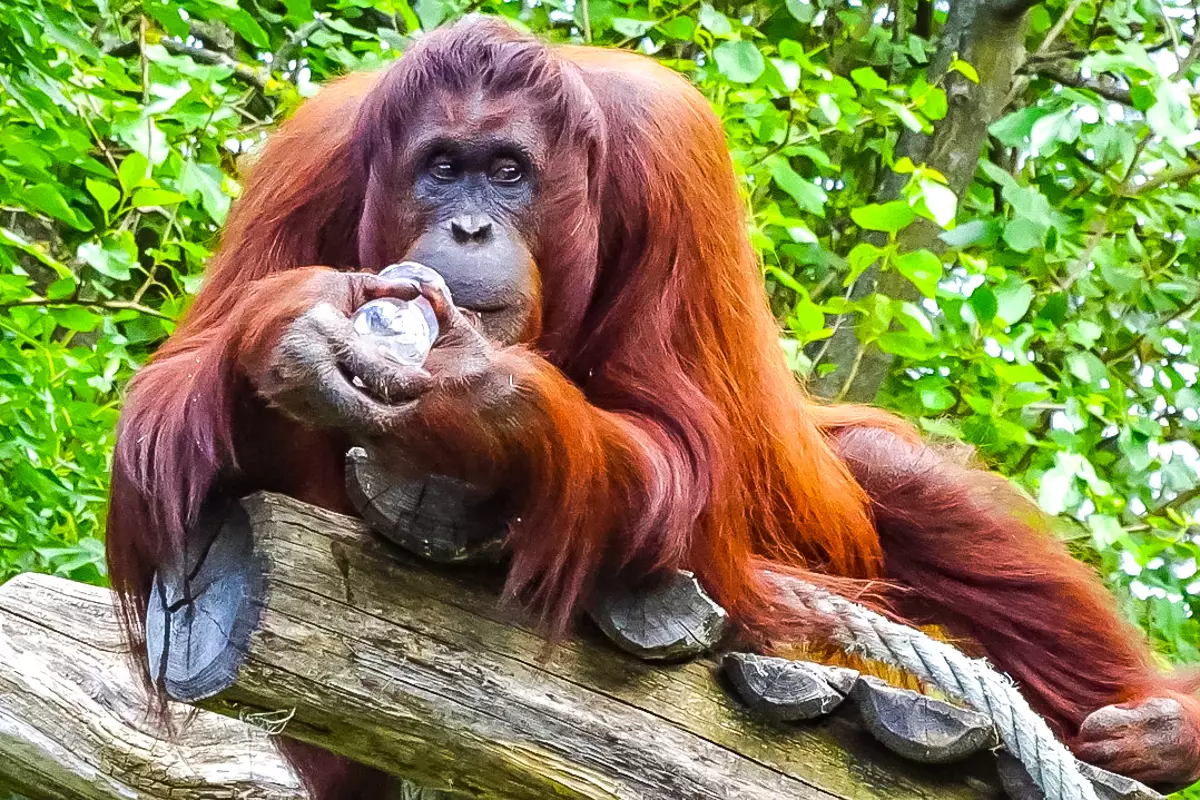
Yes, you read that right – there’s a zoo within the Schönbrunn Palace grounds, and it’s the oldest operating zoo in the world! It was founded back in 1752 for the amusement of the Habsburg family, and today it’s one of the most modern and well-maintained zoos in Europe.
Here you can see not only lions, giraffes, and penguins, but also one of the zoo’s biggest attractions – the giant pandas. Schönbrunn is one of the few places in the world where you can see them.
Tickets: Book your Schönbrunn Zoo entry here.
Special Events & Exhibitions
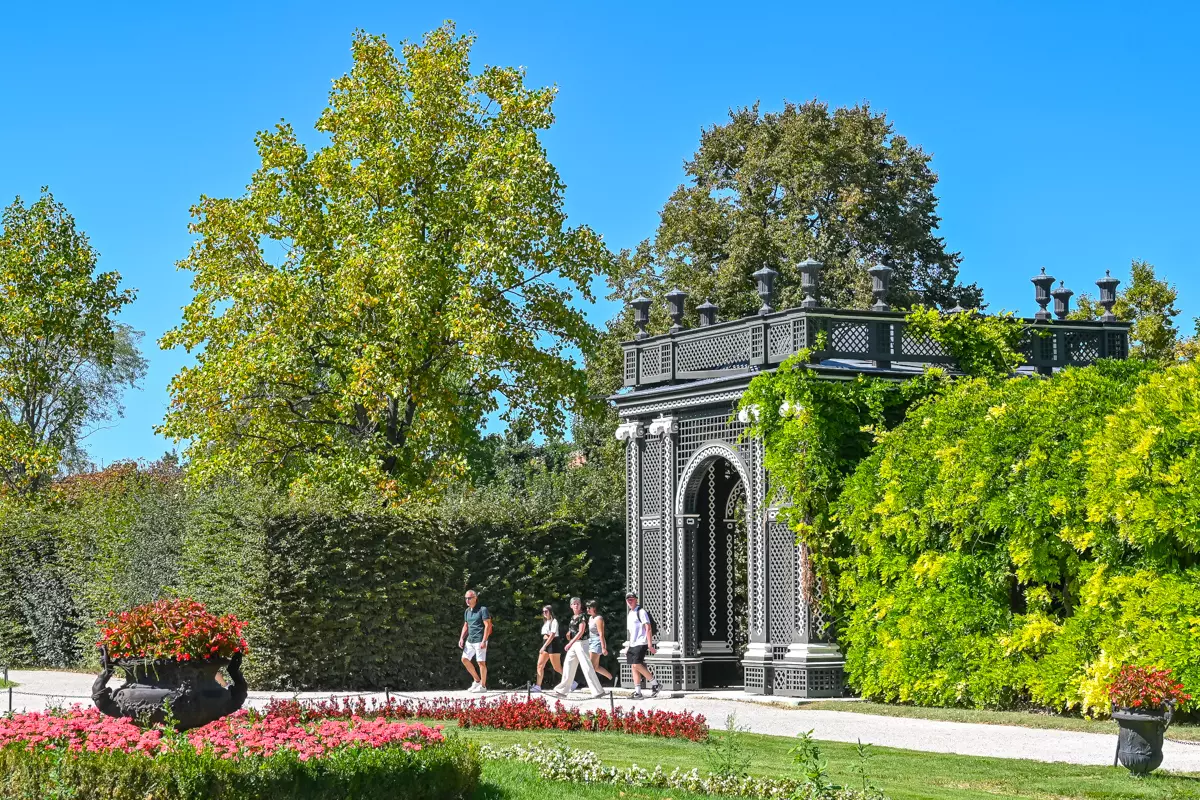
Schönbrunn Palace also regularly hosts a variety of events. From seasonal markets to world-class concerts, every time of year has its own unique highlight. Here are two of the most special ones.
Christmas Market – one of the most beautiful in all of Vienna. It takes place in the palace square, right in front of the main facade. Just picture the grand Baroque backdrop, hundreds of twinkling lights, the scent of mulled wine and gingerbread in the air. The atmosphere is truly magical – even in the crowd, Christmas here feels like something out of a fairytale.
Summer Night Concert – another unforgettable experience. Each summer, the Vienna Philharmonic Orchestra gives a free open-air concert in the palace gardens. It’s world-class music, surrounded by an imperial setting. Whether you’re a fan of classical music or simply want to soak up Vienna’s unique spirit, this event is sure to leave a lasting impression.
How To Get To Schönbrunn Palace
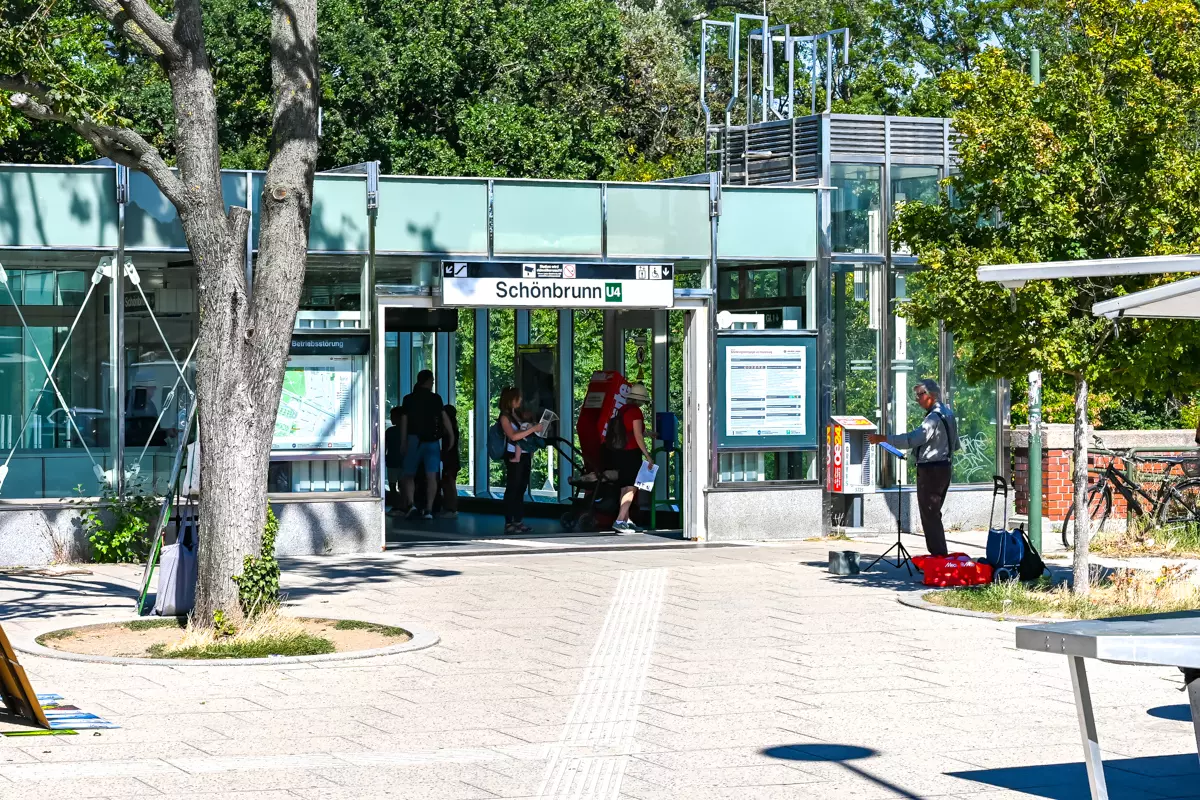
Schönbrunn Palace is located in the Hietzing district, a little outside Vienna’s city center, but it’s very easy to reach by public transport.
By Metro
The most convenient and fastest way to reach Schönbrunn is by metro. Take the U4 line to Schönbrunn station. From there, it’s just a 10-minute walk to the palace’s main entrance. The ride from the city center takes about 15–20 minutes, which makes this the most popular option for both locals and tourists.
By Tram
Tram lines 10 and 60 stop right by the palace. This is a good choice if you’re staying near Mariahilfer Strasse or in other neighborhoods outside the city center. The ride may take a little longer than the metro, but it’s a pleasant alternative that lets you enjoy the city views along the way.
By Bus
You can also reach Schönbrunn by bus. Lines 10A and 63A connect the palace area with other parts of Vienna. This option is mainly used by locals, but it can be convenient if your accommodation is close to these routes.
By Car
If you’re driving, there’s a paid parking lot right next to the palace. On weekends and during peak season it fills up quickly, so I recommend coming early in the morning. One more tip – Google Maps can sometimes send you to the bus entrance instead of the car park. To avoid confusion, check my photo below before you go – it clearly shows the correct entrance for cars.
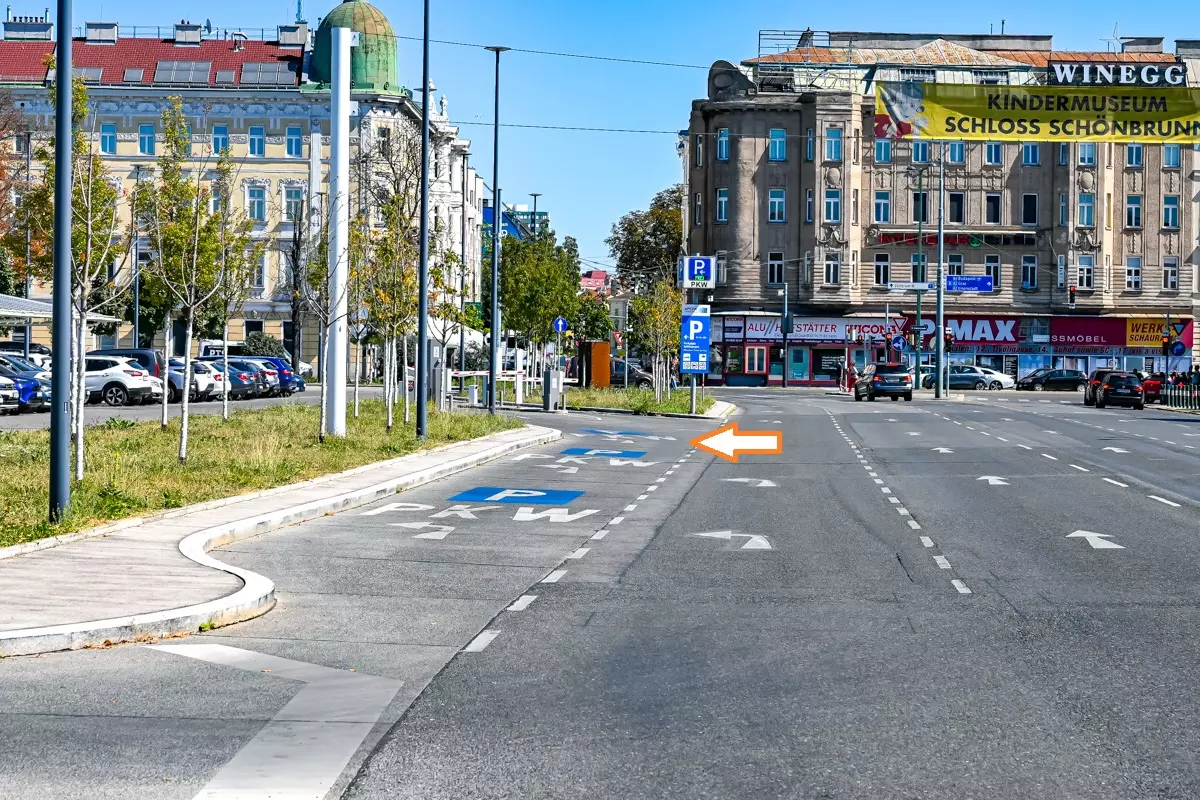
By Tour
Many agencies in Vienna offer organized tours to Schönbrunn Palace. These usually include transportation, entry tickets, and the services of a guide. It’s a great choice if you want to skip the ticket lines and like having everything organized for you.
Tickets & Opening Hours
Schönbrunn Palace is open to visitors every day of the year. The opening hours vary by season – generally from 8:30 A.M. until 5:00 P.M. in winter and until 6:00 P.M. in summer. The palace gardens stay open longer, often until dusk, while attractions such as the Orangery, the Maze, or the zoo follow separate schedules, so it’s best to check in advance.
Ticket prices depend on the type of tour you choose:
- Classic Pass – for €40 you get access to the palace plus four garden highlights: the Privy Garden, Maze & Labyrinth, Orangery Garden, and the Gloriette terrace.
- State Apartments Tour – for €25 you can explore the grand state rooms and smaller cabinets in about 40 minutes, with a virtual pre-show included.
- Palace Ticket – for €34 this takes you through the main state rooms, with a visit lasting around 40–60 minutes.
- Combination tickets – also available if you’d like to pair the palace with other attractions, like the zoo or selected garden highlights.
Where To Buy Tickets
You can buy tickets at the on-site ticket offices, but during peak season the lines can be very long. The easiest way is to purchase them online through the official Schönbrunn website, where you can choose your time slot and secure guaranteed entry without waiting. If you have the Vienna Pass, entry to the palace is included, which can save you both time and money.
FAQs About Schönbrunn Palace In Vienna
Yes! The main part of the palace park is completely free of charge. You only need to pay for certain additional attractions, such as the maze.
A short tour of the palace takes about 2–3 hours, but if you’d like to explore the gardens, museums, and the zoo, plan at least half a day.
Yes, I recommend purchasing tickets online in advance, especially in summer or on weekends. This way you’ll avoid long lines at the ticket offices.
In spring and summer, the gardens look their most impressive. In autumn, there are fewer visitors, and in winter one of Vienna’s most beautiful Christmas markets takes place here.
Absolutely! In addition to the gardens and the zoo, kids will love the Children’s Museum, where they can dress up in period costumes and experience what life was like for imperial children.
Yes – and that’s actually a fairly new change! Until 2024, taking photos inside the palace was strictly forbidden, but now you’re finally allowed to capture the beauty of the state rooms. There are a few rules though – no flash, no tripods, and no selfie sticks. Outside in the gardens and courtyards, you can take as many photos as you like.
Book your flight
For the best flight deals, I always rely on Skyscanner. Features like Multi-city and Explore Everywhere help me uncover incredible travel opportunities.
Rent a car
Discovercars is my top choice for comparing car rental prices for any road trip around the world. The booking experience is always smooth and easy.
Travel insurance
SafetyWing provides affordable travel medical insurance with global coverage, perfect for digital nomads and long-term travelers.
Book Tours & Attractions
Experiencing a destination to the fullest is easier with a well-planned itinerary. I use GetYourGuide for guided tours and Tiqets for quick access to museum and amusement park tickets.
Protect yourself online by VPN
No matter where I go, I always use NordVPN for secure browsing and to ensure I can access websites that might be blocked in certain countries.
Disclosure: I only suggest companies that I personally rely on. If you use the affiliate links in my posts to book services, I’ll earn a small commission, with no extra cost to you.
Have you visited Schönbrunn Palace in Vienna? Comment your experience with me below!
Share on

Hi, I’m Evelina, a travel enthusiast who loves nature, peace, and authentic places. I cherish the freedom to explore and learn with each adventure, whether it’s hiking trails, stunning beaches, natural parks, unique architecture, or rich cultural heritage. I hope my experiences inspire you to embark on your own journeys!
